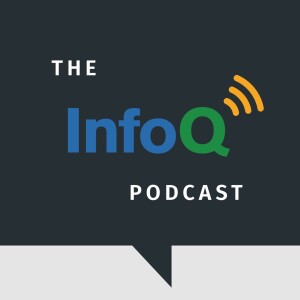
Rod Johnson Chats about the Spring Framework Early Days, Languages Post-Java, & Rethinking CI/CD
 2019-03-23
2019-03-23
Download
Right click and do "save link as"
Today on The InfoQ Podcast, Wes talks with Rod Johnson. Rod is famously responsible for the creation of the Spring Framework. The two talk about the early years of the framework and provides some of the history of its creation. After discussing Spring, Wes and Rod discuss languages he’s been involved with since Java (these include Scala and TypeScript). He talks a bit about what he liked (and didn’t like) about each. Finally, the two wrap by discussing Atomist and how they’re trying to change the idea of software delivery from a statically defined pipeline (located in individual repositories) to an event hub that drives a series of actions for software delivery. He describes this as creating an API for your software.
Why listen to this podcast:
- The initial origins of the Spring Framework really came about through a process of trying to write a really great book about J2EE in 2002. It was through that process that Rod Johnson found he felt there was a better way and ultimately lead to the creation of the Spring Framework.
- What started as examples and references, became the Spring Framework. By 2005 there were about 2 million downloads of the Spring Framework.
After leaving VMWare in 2013, Rod spent several years working with Scala. One of the elegant features that really attracted Rod to Scala was how everything is an expression. One of the things he didn’t like was an affinity to overly complex approaches to problem solving.
- Today at Atomist, Rod does a lot of work in Node. He really enjoys the robust extra layer of typing over a dynamic language and the ability to escape to JavaScript if needed (similar to escaping types with reflection in Java found in the internals of the Spring Framework).
- Atomist, the company he founded after leaving VMWare, is rethinking CI/CD from a static pipeline defined in every repository to an event-driven system that defines how to respond to specific events (such as a push from Git). For example, all pushes with Spring Boot can be configured to be scanned with SonarQube or because a push has kubespec it might get deployed to a K8 cluster. He describes this as creating an API for your software.
- One of the reasons Atomist integrates so tightly with Slack (and other similar messaging platforms) is because it allows developers to shape their own relevant messages. By joining (or leaving channels), people are able to subscribe to only the information they actually want. Meeting developers inside Slack is an important interface for Atomist.
More on this: Quick scan our curated show notes on InfoQ https://bit.ly/2FxK3xf
You can also subscribe to the InfoQ newsletter to receive weekly updates on the hottest topics from professional software development. bit.ly/24x3IVq
Subscribe: www.youtube.com/infoq
Like InfoQ on Facebook: bit.ly/2jmlyG8
Follow on Twitter: twitter.com/InfoQ
Follow on LinkedIn: www.linkedin.com/company/infoq
Check the landing page on InfoQ: https://bit.ly/2FxK3xf
view more
More Episodes
Cyber Security with Maxime Lamothe-Brassard
 2022-01-24
2022-01-24
 2022-01-24
2022-01-24
Event Driven Architectures of Scale
 2021-11-19
2021-11-19
 2021-11-19
2021-11-19
Tammy Bryant Butow on SRE Apprentices
 2021-09-13
2021-09-13
 2021-09-13
2021-09-13
012345678910111213141516171819
Create your
podcast in
minutes
- Full-featured podcast site
- Unlimited storage and bandwidth
- Comprehensive podcast stats
- Distribute to Apple Podcasts, Spotify, and more
- Make money with your podcast
It is Free
- Privacy Policy
- Cookie Policy
- Terms of Use
- Consent Preferences
- Copyright © 2015-2024 Podbean.com





